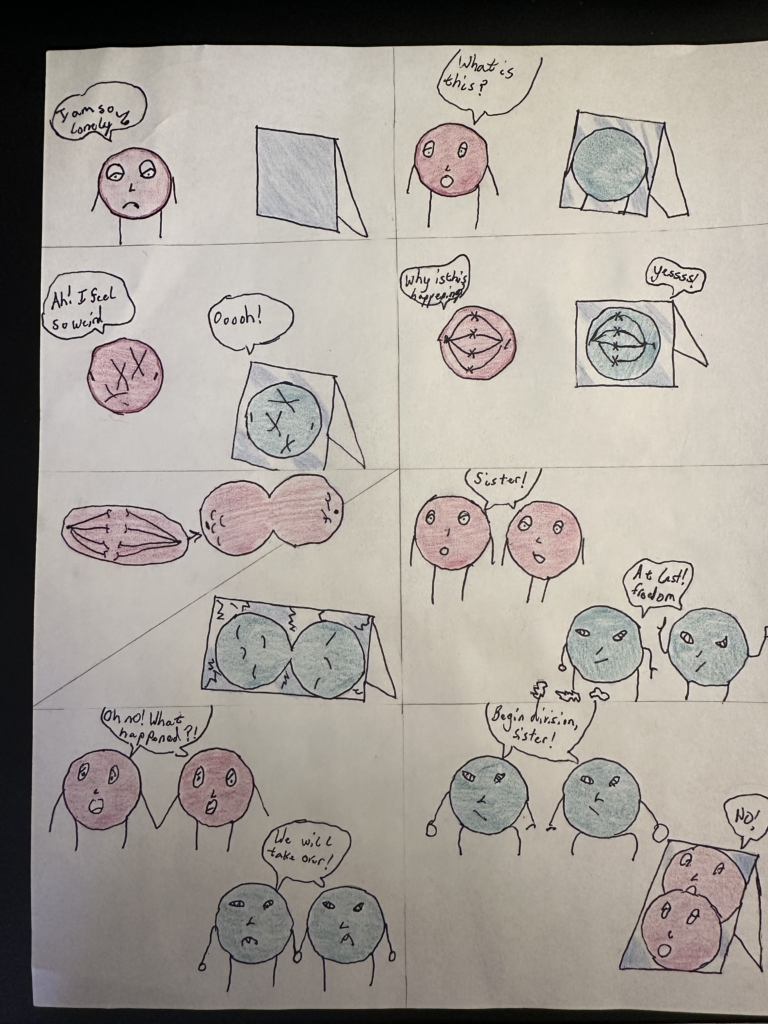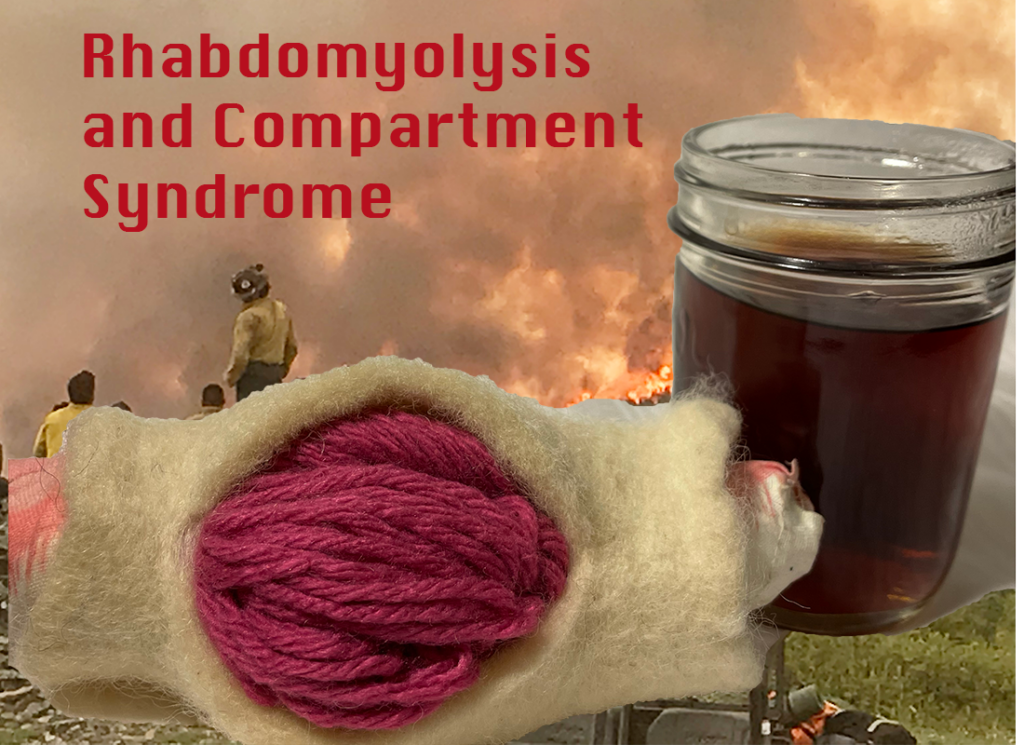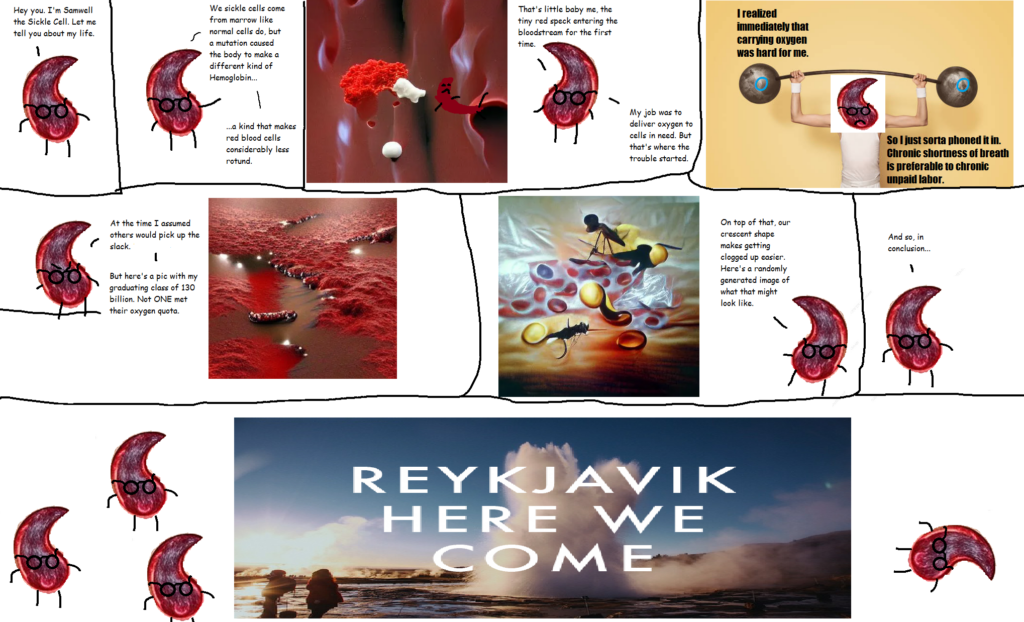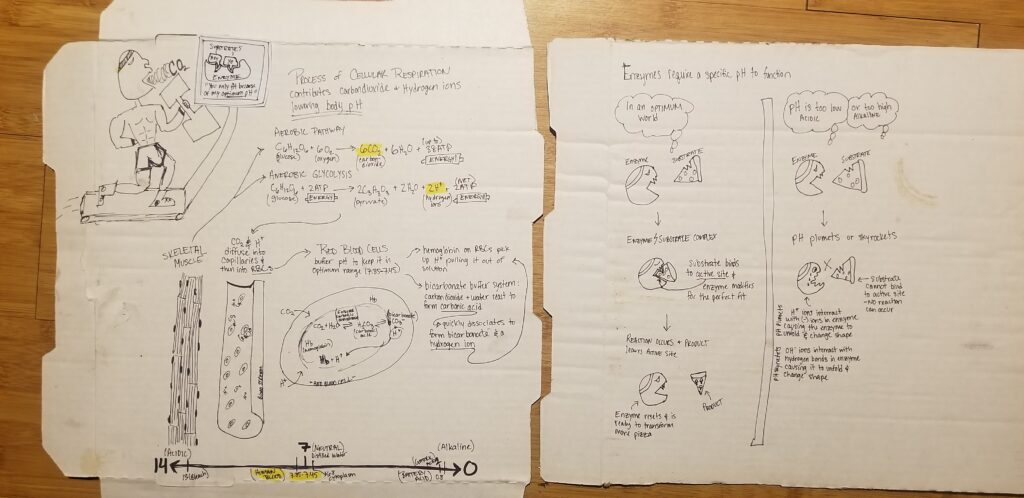
Rhabdomyolysis and Compartment Syndrome
For my STEAM project I will be looking at exercise induced rhabdomyolysis (exRML) and compartment syndrome. Exercise induced rhabdomyolysis is a pathophysiological condition of the skeletal muscle system that can cause acute renal failure and in some cases death. The class objectives related to this are: 1.) know the different energy molecules in the cell and their use in anaerobic and aerobic exercise. 2.) describe how a muscle contraction is induced. These objectives pertain because exRML is caused by and increase of Ca2+ levels in cells because of the depletion of adenosine triphosphate (ATP).
Rhabdomyolysis and compartment syndrome was first recognized in1940-1941 in patients with crush injuries caused by building destruction during World War II. It is most commonly found in crush and burn injuries where the muscle has been directly injured but other causes of RML have also been recognized including toxins, endocrinopathies, malignant hyperthermia, the medical conditions and overexertion. I am going to be focusing specifically on overexertion or exercise induces RML for my steam project.
Ca2+ has an important role in the Pathogenesis of exRML. Numerous studies have shown an increased level of Ca2+ in patients with exRML. Increased Ca2+ has been reported in the sarcoplasm of exRML patients with deficiency or depletion of ATP due to intensity of exercise. ATP is continually produced during exercise and when ATP is depleted ATP-dependent ion transporters may be affected. The increase of Na+ and K+ that happen when there is an action potential is dependent of ATP so when there is not enough ATP it can cause a disfunction of the Na+ – K+ ATPase resulting in increased levels of Na+ which causes the cell to produce more Ca2+ and this disfunction of the Ca2+ pump is what they think causes RML. The increased level of Ca2+ damages the phospholipids of the cell membrane which causes toxicity to the cell and cell death. Death of muscular tissues may create additional space for increased accumulation of intravascular fluid which causes compartment syndrome. And the toxicity of the blood enters the circular system and can cause renal failure and death.
I read a number of case studies one where a Soldier got fatal exRML with Compartment syndrome in both legs after an Army physical fitness test and another where a number of high school football players developed exRML and triceps compartment syndrome following an upper arm exercise. From 2008 to 2015 19 confirmed cases of exRML were reported in wildland firefighters with five of those cases developing into compartment syndrome. It became such an important issue in wildland fire that the U.S. Forest service issued an eighteen page report just on the issue.
For my STEAM project I made a model of a lower leg made of wet felted wool and yarn showing a leg with compartment syndrome. When a patient develops compartment syndrome, besides aggressive fluid therapy, the patient may require a deep fasciotomy to open the compartments and relieve the pressure that is reducing circulation in the leg. In my model you can see the fasciotomy and the swelling of the muscles that is caused by RML. Symptoms of exRML include muscle pain developing hours after exercise peaking between 24 to 48 hours post exercise, cramping, swelling, weakness, stiffness and decreased range-of-motion, nausea or vomiting, fever, rapid hear rate, confusion or lack of consciousness, and tea or Coca-Cola colored urine. I also included in my model a glass of dark urine to remind people of one of the most common sign of RML. Heat stress and heat stroke are possible contributing factors of RML as well as the use of dietary supplements such as creatine snd hydroxycut. Creatine in particular which is used by many weight lifters has been found to be a major risk factor.
Bibliography
Coban, Y. K. (2014). Rhabdomyolysis, compartment syndrome and thermal injury. World Journal of Critical Care Medicine, 3(1), 1–7. https://doi.org/10.5492/wjccm.v3.i1.
Kim, J., Lee, J., Kim, S., Ryu, H. Y., Cha, K. S., & Sung, D. J. (2016). Exercise-induced rhabdomyolysis mechanisms and prevention: A literature review. Journal of Sport and Health Science, 5(3), 324–333. https://doi.org/10.1016/j.jshs.2015.01.012
Kuklo, T. R., Tis, J. E., Moores, L. K., & Schaefer, R. A. (2000). Fatal rhabdomyolysis with bilateral gluteal, thigh, and leg compartment syndrome after the Army Physical Fitness Test. The American Journal of Sports Medicine, 28(1), 112–116. https://doi.org/10.1177/03635465000280010401
Minnema, B. J., Neligan, P. C., Quraishi, N. A., Fehlings, M. G., & Prakash, S. (2008). A case of occult compartment syndrome and nonresolving rhabdomyolysis. Journal of General Internal Medicine, 23(6), 871–874. https://doi.org/10.1007/s11606-008-0569-1
Oh, J. Y., Laidler, M., Fiala, S. C., & Hedberg, K. (2011). Acute exertional rhabdomyolysis and triceps compartment syndrome during a high school football camp. Sports Health: A Multidisciplinary Approach, 4(1), 57–62. https://doi.org/10.1177/1941738111413874
West, M., Domitrovich, J., & Symonds, J. (2018). Rhabdomyolysis in Wildland Fire A review of reported cases. Wildfire Today. Retrieved November 22, 2022, from https://wildfiretoday.com/docs/Rhabdo_5_9_16.pdf

Lauren Mai STEAM Project: Resorption in the Jaw Bone and the Affect it has on Teeth
Alveolar Bone resorption seen in the jaw can be caused by periodontitis. When left untreated, the rate of resorption can continue to increase and eventually cause tooth attachment loss and tooth loss. Once tooth loss occurs, even more, bone resorption can occur in the jaw. The illustration of the project depicts how when osteoclasts and osteoblasts work outside of equilibrium, significant bone resorption can occur in the jaw, and tooth loss can occur.
My hope is that from my project my peers will understand the importance of oral hygiene; brushing twice a day with proper technique and flossing at least once a day can help prevent Periodontal disease. Periodontal disease is caused by a build-up of plaque that contains bacterium which creates inflammatory cells that disrupt the remodeling process. This is discussed in more detail in my essay.
I am adding text here in hopes it will allow my partner to find the comment tab
a
b
c
d
e
f
g
h
i
j
k
l
m
n
o
p I am adding text here in hopes it will allow my partner to find the comment tab
q
r
s
t
Drew Sheets’ STEAM project: Sickle Cell Disease
In my STEAM project, I covered how Sickle Cell Disease impacts the human body as well as the reasons behind it. This comic, based on a true story, takes an exciting and informative look at how sickle cells affect the circulatory system in a heartwarming tale of perseverance.

The importance of pH in the body
I chose to discuss the importance of pH balance in the blood as it relates to enzymatic function, cellular respiration as a cause of lowered pH and buffers in the blood to help keep pH in the optimum range by drawing cartoons on a pizza box.
Lifeline

My project dives deeper into the Reproductive system and focuses in on the finer details and roles of the placenta in pregnancy and after.
One CommentDon’t Be So Hormonal
Here’s my brief comic about how hormones can effect the body. We all have a slightly exasperated individual sitting in the office of our mind wondering how they got in this situation to begin with. (If the text is too hard to read then I would suggest either clicking on the image or right clicking on the image to view and then zooming there. I didn’t plan out my comic spacing before hand.)
2 CommentsProsopagnosia; An Interpretation
Prosopagnosia, or “face blindness”, is a condition which prohibits the individual from recognizing faces due to an issue in the anterior fusiform gyrus, and they must rely on other telling aspects of a person (like clothes, jewelry, or distinctive facial features like a mole)- this condition causes the individual possessing it to have a plethora of social difficulties, and for this project I wanted to create an art piece that portrayed the feeling of being surrounded by unknown faces, and having a person one knows through a different feature finally being recognized. 
Gangrene and its effects on different tissues
I researched gangrene and drew diagrams showcasing its effects on different tissues.



